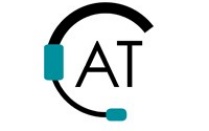Measurement of voltage, current and resistance
Competency Group: Electrical Engineering
Type: Design, Modeling and prototyping Hardware
Description: Measurement of voltage, current and resistance is a very inexpensive and essential part of equipment for household voltages and currents. When voltages and currents increase test methods can become difficult. E.g. Probes are used to measure Voltage Current and Resistance around a circuit and displayed generally on a digital readout.
Citation for Description: Described by authors
Units: Volts — Amps and Ohms
Advantages: Completely necessary for any electrical diagnostics — generally very cheap.
Limitations: Some devices have a time delay associated with them that can lead to false positives/negatives — also some machines have very little tolerance, and bad contacts give bad results.
Regulations: IEEE Standards Organization. (2012). Retrieved from http://standards.ieee.org/
Target Audience: Engineering
Relevant to Universal Design: No
Stages and Steps: 2.2, 5, 6
Free Resource: Bird, J. (2003). Electrical and Electronic Principles and Technologies. Burlington, MA: Elsevier Science.
Free Resource: Calculatoredge. (n.d.). Ohm's Law Calculator. Retrieved from http://www.calculatoredge.com/enggcalc/ohm's-law-calc.htm
